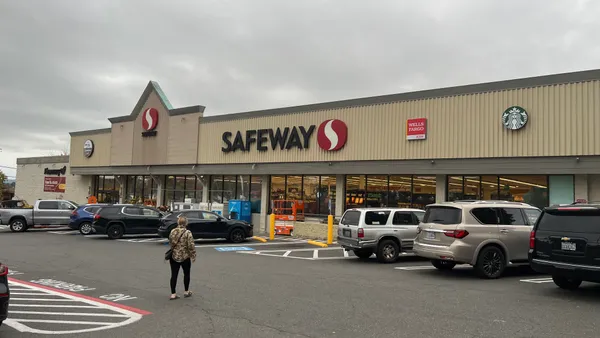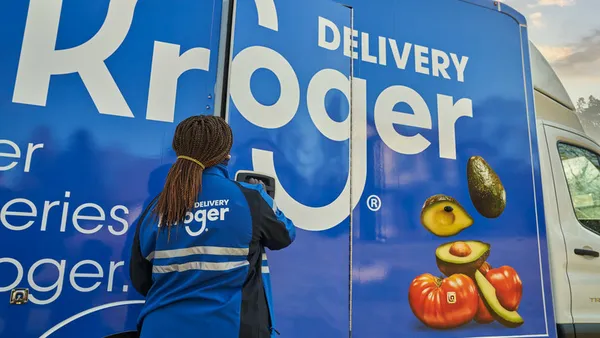Private brands are having a moment right now as consumers trade down amid ongoing high inflation.
But high inflation will eventually fade, and with it the price attractiveness of store brands. When that happens, grocers will need to figure out how to keep shoppers putting margin-boosting private labels in their baskets, said Carman Allison, an expert on consumer behavior for NielsenIQ.
Grocers can leverage private brands as key differentiators to help stand out and many are already making strides, but sources highlighted several key areas where there’s still more work ahead, from ramping up their store brands’ e-commerce presence to pushing for more product innovation.
Complacency, in particular, can be a major pitfall.
“You don't continue to grow based on expecting consumers to do the same thing over and over again,” Allison said. “You’ve got to continue to innovate and look for new growth opportunities.”

Resolve questions around quality
Product quality is a top factor for shoppers. But a McKinsey survey last year found that only about a third (35%) of surveyed consumers cited “equal quality for less money” as a top reason for buying private brands.
“Research often reveals that consumers recognize private-brand goods as lower-priced products but not as products that deliver on quality, innovation, or excitement. Furthermore, consumer perception of a private brand can differ markedly across categories or departments,” McKinsey noted.
The Hartman Group, a consumer-focused research firm, has seen a range of reactions from consumers on quality.
“Some consumers, especially those who are a little bit more name brand loyal, say that there's still something missing. They'll say it's almost as good as but it's just not quite there [with] taste or texture or something like that,” said Shelley Balanko, senior vice president at the firm.
“[Consumers] just really want cheaper, healthier versions of the things that they already find. And while they aren't screaming about inferior quality, just improving quality to be on par or exceed name brand options would be the hurdle to overcome.”

Shelley Balanko
Senior vice president, The Hartman Group
McKinsey has suggested that retailers take action to close the “quality perception gap” that can plague private brands, giving the example of one unnamed retailer blogging about its private-brand baby products on popular parenting websites and forums, while another sought out an independent quality certification.
Proprietary research last year by Save A Lot found that consumers were consistent in their enthusiasm to buy private brands to save money and that they felt those products were similar in quality to national brands, Tim Schroder, the company’s chief sales and marketing officer, said in an interview earlier this summer.
The research found, though, that consumers viewed quality differently depending on the product. Items like sugar, yellow mustard and canned vegetables received high scores while items like coffee, toilet paper and laundry detergent were more attractive for the price versus quality. “They said, ‘You know private label doesn't always match up, but at the price is right we’re willing to give it a shot,’” Schroder said.
Schroder noted that private brands are sometimes made by the same manufacturers behind the national brands, meaning the “quality is very similar, if not exact same formulation.”

Elevate e-commerce
Online dollar sales for private brands grew 22% for the last 26 weeks ending March 20, according to IRI data cited by the Food Industry Association (FMI) in its latest private brand report. The same report also found that frequent private label shoppers spend more online than they do in-store.
But retailers need to step up online merchandising of private brands, in FMI’s view. The trade group has encouraged retailers to employ tactics like better product placement on their homepages, improving product listings and leveraging banner ads and other promotions.
FMI noted last fall that only 67% of retailers it surveyed said their private brand assortment is online.
While retailers may be tempted to give store brands prominent placement on their e-commerce platforms, MaryEllen Lynch, principal of center store at IRI, said that can sometimes backfire and stressed that merchandising requires finesse.
For example, if a shopper is searching for the 50-count of a favorite brand but is first shown the store brand option, there’s no guarantee the shopper will forego their desired product, Lynch said. Instead, the grocer could make the exact desired product the top search result but then suggest the store brand in a different size or flavor to encourage trial. Retailers should use past purchase data and algorithms to help determine online product placement, Lynch said.
Meet shopper expectations
With the rise of cross-shopping, retailers need to be mindful of how their private brands fulfill customer expectations and impact the selection on their shelves, sources said.
“There still has to be that delivery of promise,” Allison said.
The McKinsey report noted that retailers sometimes lack a private brand strategy and that can hurt their efforts to hold onto shopper loyalty. The firm also said that retailers often overlook clearly defining the customer value proposition of each private brand.
For private brands in the U.S., McKinsey suggested retailers identify consumer need states not covered by price or value alone, such as organic, premium or health, and then highlight the main “enhanced benefits” of its offerings to shoppers. The firm also recommended retailers define pricing and promotional guardrails across brands based on relative brand strength.

Grocers need to consider how a store brand impacts the shelf overall and how consumers perceive value on a category-by-category basis, Lynch said, noting that over the last two years, consumers have seen their choices contract from SKU rationalizations and, earlier in the pandemic, out-of-stocks.
Issues can arise when grocers remove pack sizes and flavors from brands to make room for their own and when the value of a private brand product is not aligned with the value position of the banner, Lynch said, citing as an example a premium banner that releases a value brand: “People will be like, ‘This is cheap food.’”
Make a splash with product innovation
In a sign that private brands may lack innovation and excitement, McKinsey found only 5% of the surveyed shoppers said they buy private brands because the brand has the “newest or latest products.”
National brands tend to be more cutting-edge in following trends, like plant-based proteins, than private brands, Allison said, pointing to current health and wellness trends as an opportunity for retailers to develop new store brand offerings.
Many retailers across different formats carry the same products, which makes their private brands portfolio a great place to aim to differentiate assortment, from offering different flavors to price tiers to pack sizes, Allison said. Shoppers, especially younger ones, are open to trialing completely new products and would like to not just see private brands replicate offerings from name brands, Balanko said.
“[Consumers] just really want cheaper, healthier versions of the things that they already find,” Balanko said. “And while they aren't screaming about inferior quality, just improving quality to be on par or exceed name brand options would be the hurdle to overcome.”
Save A Lot, for example, does line reviews to see where there are gaps between new and national brands and its private brands portfolio and also watches industry trends to find areas to expand its assortment, Schroder said, noting the launch last fall of its Ace’s candy line, which Save A Lot identified as an opportunity to help it compete with dollar stores in that category.
For grocers with multiple price tiers for store brands, Allison said it's more common to see product innovation, like an “exotic” flavor, in the premium tier.
As grocers play with their private brand offerings, there’s a key metric for them to watch.
“The true testament of a successful transition is whether or not someone comes back and repeats [the purchase],” Allison said.












